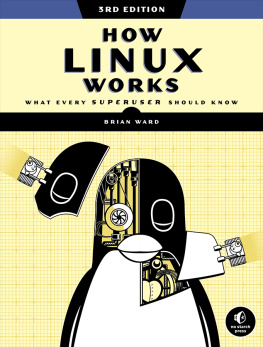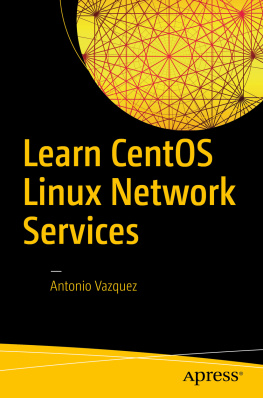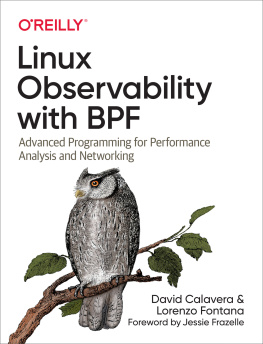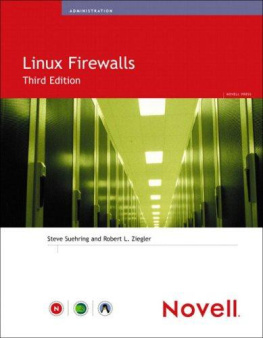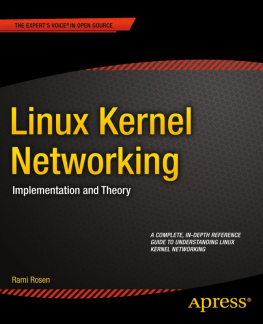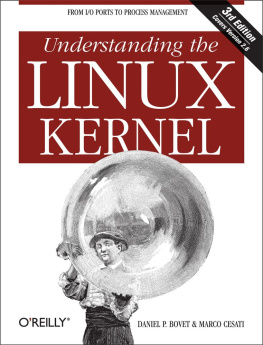Preface
Today more than ever before, networking is a hot topic. Any electronic gadget in its latest generation embeds some kind of networking capability. The Internet continues to broaden in its population and opportunities. It should not come as a surprise that a robust, freely available, and feature-rich operating system like Linux is well accepted by many producers of embedded devices. Its networking capabilities make it an optimal operating system for networking devices of any kind. The features it already has are well implemented, and new ones can be added easily. If you are a developer for embedded devices or a student who would like to experiment with Linux, this book will provide you with good fodder.
The performance of a pure software-based product that uses Linux cannot compete with commercial products that can count on the help of specialized hardware. This of course is not a criticism of software; it is a simple recognition of the consequence of the speed difference between dedicated hardware and general-purpose CPUs. However, Linux can definitely compete with low-end commercial products that are entirely software-based. Of course, simple extensions to the Linux kernel allow vendors to use Linux on hybrid systems as well (software and hardware); it is only a matter of writing the necessary device drivers.
Linux is also often used as the operating system of choice for the implementation of university projects and theses. Not all of them make it to the official kernel (not right away, at least). A few do, and others are simply made available online as patches to the official kernel. Isn't it a great satisfaction and reward to see your contribution to the Linux kernel being used by potentially millions of users? There is only one drawback: if your contribution is really appreciated, you may not be able to cope with the numerous emails of thanks or requests for help.
The momentum for Linux has been growing continually over the past years, and apparently it can only keep growing.
I first encountered Linux at the University of Bologna, where I was a grad student in computer science around 10 years ago. What a wonderful piece of software! I could work on my image processing projects at home on an i286/486 computer without having to compete with other students for access to the few Sun stations available at the university labs.
Since then, my marriage to Linux has never seen a gray day. It has even started to displace my fond memories of the glorious C64 generation, when I was first introduced to programming with Assembly language and the various dialects of BASIC. Yes, I belong to the C64 generation, and to some extent I can compare the joy of my first programming experiences with the C64 to my first journeys into the Linux kernel.
When I was first introduced to the beautiful world of networking, I started playing with the tools available on Linux. I also had the fortune to work for a UNESCO center in Italy where I helped develop their networking courses, based entirely on Linux boxes. That gave me access to a good lab equipped with all sorts of network devices and documentation, plus plenty of Linux enthusiasts to learn from and to collaborate with.
Unfortunately for my own peace of mind (but fortunately, I hope, for the reader of this book who benefits from the results), I am the kind of person that likes to understand everything and takes very little for granted. So at UNESCO, I started looking into the kernel code. This not only proved to be a good way to burn in my knowledge, but it also gave me more confidence in making use of user-space configuration tools: whenever a configuration tool did not provide a specific option, I usually knew whether it would be possible to add it or whether it would have required significant changes to the kernel. This kind of study turns into a path without an end: you always want more.
After developing a few tools as extensions to the Linux kernel (some revision of versions 2.0 and 2.2), my love for operating systems and networking led me to the Silicon Valley (Cisco Systems). When you learn a language, be it a human language or a computer programming language, a rule emerges: the more languages you know, the easier it becomes to learn new ones. You can identify each one's strengths and weaknesses, see the reasons behind design compromises, etc. The same applies to operating systems.
When I noticed the lack of good documentation about the networking code of the Linux kernel and the availability of good books for other parts of the kernel, I decided to try filling in the gapor at least part of it. I hope this book will give you the starting documentation that I would have loved to have had years ago.
I believe that this book, together with O'Reilly's other two kernel books ( Understanding the Linux Kernel and Linux Device Drivers ), represents a good starting point for anyone willing to learn more about the Linux kernel internals. They complement each other and, when they do not address a given feature, point the reader to external documentation sources (when available).
However, I still suggest you make some coffee, turn on the music, and spend some time on the source code trying to understand how a given feature is implemented. I believe the knowledge you build in this way lasts longer than that built in any other way. Shortcuts are good, but sometimes the long way has its advantages, too.
The Audience for This Book
This book can help those who already have some knowledge of networking and would like to see how the engine of the Internetthat is, the Internet Protocol (IP) and its friendsis implemented on a first-class operating system. However, there is a theoretical introduction for each topic, so newcomers will be able to get up to speed quickly, too. Complex topics are accompanied by enough examples to make them easier to follow.
Linux doesn't just support basic IP; it also has quite a few advanced features. More important, its implementation must be sophisticated enough to play nicely with other kernel features such as symmetric multiprocessing (SMP) and kernel preemption. This makes the networking code of the Linux kernel a very good gym in which to train and keep your networking knowledge in shape.
Moreover, if you are like me and want to learn everything, you will find enough details in this book to keep you satisfied for quite a while.
Background Information
Some knowledge of operating systems would help. The networking code, like any other component of the operating system, must follow both common sense and implicit rules for coexistence with the rest of the kernel, including proper use of locking; fair use of memory and CPU; and an eye toward modularity, code cleanliness, and good performance. Even though I occasionally spend time on those aspects, I refer you to the other two O'Reilly kernel books mentioned earlier for a deeper and detailed discussion on generic operating system services and design.
Some knowledge of networking, and especially IP, would also help. However, I think the theory overview that precedes each implementation description in this book is sufficient to make the book self-contained for both newcomers and experienced readers.
The theoretical description of the topics covered in the book does not require any programming experience. However, the descriptions of the associated implementations require an intermediate knowledge of the C language. will go through a series of coding conventions and tricks that are often used in the code, which should help especially those with less experience with C and kernel programming.


